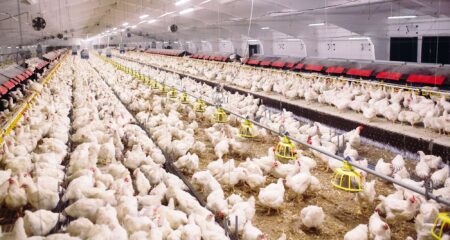Farmers with cotton, rice and peanut base acreage stand to get the biggest subsidy increases under the changes Congress made to farm bill commodity programs through the One Big Beautiful Bill Act, with average payments for peanut and rice base jumping more than 200%, according to a new analysis.
All farmers with eligible base acres would see bigger payments because of the spending and tax bill, but the average increases per base acre are estimated to vary widely from 62.1% for corn, 65.3% for sorghum, and 71.9% for soybeans to 177.2% for cotton, 205% for peanuts and the 222% increase for rice, according to economists at the University of Missouri’s Food and Agriculture Policy Research Institute. FAPRI has long advised Congress on policy impacts.
The legislation, enacted over Democratic opposition in July, increases reference prices in the Price Loss Coverage (PLC) Program and also makes enhancements to the Agriculture Risk Coverage (ARC) program.
PLC triggers payments when the average market price for an eligible commodity falls below the reference price for the relevant commodity for that year. ARC triggers payments when county revenue falls below the guarantee level for that year. The ARC guarantee is tied to a five-year average of market prices.
For both programs, payments are tied to the base acreage a producer has for a particular commodity, regardless of whether the farmer actually grew the crop that year. Another provision in the bill allows farmers to enroll up to 30 million in additional base acres that will be eligible for PLC or ARC.
According to the FAPRI analysis, Corn payments would go from an average of $24.97 an acre to $40.47 per acre, while rice payments would rise from $50.45 per base acre to $162.58.
Other findings of the analysis:
- Soybean payments will rise from $14.90 to $25.61 per base acre.
- Seed cotton payments will go from $32.77 to $90.84 per base acre.
- Peanuts will increase from $64.46 to $196.60 per base acre.
- Wheat payments will rise from $14.90 to $34.18 per base acre.
- Sorghum payments will increase from $18.03 to $29.81 per base acre.
The FAPRI report cautioned that the actual payments will be higher or lower depending on what commodity markets do.
The analysis noted that USDA in August projected a record corn crop that could result in lower market prices than used in the analysis. “All else equal, that would result in higher average ARC and PLC payments for the crop, both under 2018 farm bill provisions.
This article was originally published by Agri-Pulse. Agri-Pulse is a trusted source in Washington, D.C., with the largest editorial team focused on food and farm policy coverage.


:max_bytes(150000):strip_icc()/IMG_1591-2048x1365-362687ca596f4814967abffff2b4be2c.jpg)
:max_bytes(150000):strip_icc()/SuccessfulFarmingShareImage-8fed6410b43147a19ed5ea1e3243227f.png)



:max_bytes(150000):strip_icc()/100126992_farm_field-05dac1ada91f45c4a3b408be9effc532.jpg)

:max_bytes(150000):strip_icc()/IMG_7575-ac6db3006a2145109bcc2df421c7a962.jpeg)

:max_bytes(150000):strip_icc()/Markets-3-Corn-up-3-19bdbeee0041452db8bce0a0f1c8b883.jpeg)